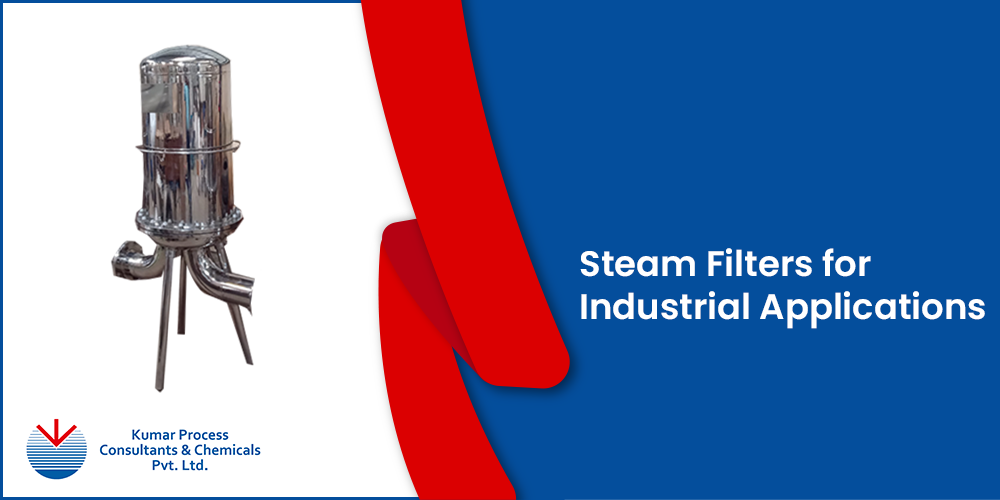


Steam filtration is a critical process for removing impurities from steam across various industries. It serves as an essential component in any industrial application that relies on steam as an energy source, whether for mechanical processes, heating, or sterilization.
In industrial applications, steam filters are chosen based on the specific needs of each process. One of the important uses of steam filtration is sterilization. Sterile filters for compressed air or gas systems are designed to eliminate bacterial and viral contaminants from the compressed air source before use. To effectively fulfill this role, the sterile filter and its elements must be sterilized prior to each use and re-sterilized daily, or whenever the system is shut down for maintenance.
The steam filters are primarily designed to remove biological contaminants and may not effectively handle the larger coarse contaminants found in sourced steam. Here, steam filters play a vital role in effectively removing these coarse particulates before steam reaches the sterile filters for in-situ sterilization, thereby extending the functional life of the filters.
Key Components of a Steam Filtration Systems:
Process steam filters are used in applications where steam does not directly contact the product. They ensure clean, dry steam for indirect heating systems, protecting equipment from contaminants like rust and particulates.
Culinary steam filtration systems are designed to remove contaminants, ensuring steam meets FDA regulations and 3-A standards for the food and beverage industry. They are built with stainless steel housings and pleated stainless steel elements, ideal for applications such as sterilizing equipment, blanching, and sanitizing in food production.
Sanitary steam filters are used in the pharmaceutical, biotech, and electronics industries, where steam contacts product surfaces or final filtration is required. These filters remove 98% of particles as small as 1 micron, meeting FDA and 3-A standards for creating safe, sterile steam. They are often used in Steam-in-Place (SIP) cycles and for ensuring cleanliness in sensitive manufacturing processes.
Clean steam filters are applied in industries where live steam comes into direct contact with products, such as in medical sterilization, chemical production, and food processing. These filters are compact, easy to clean, and maintain a high level of purity, making them suitable for use in equipment like steam sterilizers and steam cleaning systems.
Steam filters use specialized filter media designed to effectively remove contaminants such as dirt, rust, scale, and other particles from steam.
To maintain optimal performance and prolong the life of steam filter elements, regular cleaning is essential. The cleaning method depends on the type of contaminants present:
Proper cleaning and maintenance of steam filter elements not only maximize performance but also extend the lifespan of downstream equipment and help to maintain product quality.
Industrial steam filters are vital for ensuring the smooth operation of steam-based systems across industries. From preventing equipment damage to maintaining product quality, the right steam filter system can enhance efficiency and reduce costs. Whether you need a sanitary steam filter, a culinary filter for steam, or a sintered stainless steel steam filter element, selecting the appropriate filter for your application is crucial. Investing in a quality steam filter from a reliable steam filter manufacturer can help optimize industrial processes and ensure long-term operational success.
A culinary steam filter is designed to remove impurities from steam used in food and beverage processing, ensuring safe, contaminant-free products.
Challenges include removing fine particulates, managing pressure drops, and maintaining consistent steam quality without impacting flow rate or filter lifespan.
Steam filters are typically used in cooking, sterilization, and cleaning processes to prevent contamination and ensure product safety and quality.
Common filters include pleated stainless steel, sintered metal, and mesh filters based on specific filtration needs and steam quality requirements.
Pore sizes range from 1 to 5 microns, depending on the level of filtration needed and the application’s cleanliness requirements.
Steam filtration enhances product quality, protects downstream equipment, improves process efficiency, and ensures safety in pharmaceutical and food industries.
To clean a steam filter element use appropriate cleaning agents, and thoroughly rinse and dry the filter before reinstalling it.